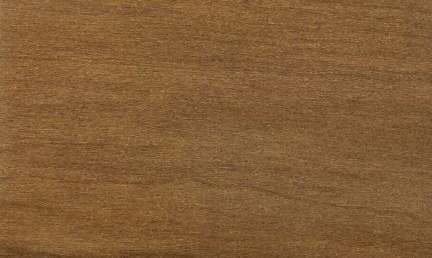
Sassafras (Doryphora sassafras)
Family: Monimiaceae
Common names: Canary sassafras, Golden deal, Grey sassafras, Sassafras, Yellow sassafras
Distributed in: Australia (Oceania and S.E. Asia)
Distribution overview: Australia, in the brushwood forests throughout the coastal regions of Victoria, New South Wales, and Queensland.
Common uses: Boxes and crates, Brush backs & handles, Cabinetmaking, Flooring, Furniture, Plywood corestock, Plywood, Tool handles, Turnery, Veneer: decorative
Environment profile: Status unknown due to inadequate information
Tree size: Trunk diameter is 200-250 cm
Colors: the heart isYellow to golden-yellow to orange, Yellowish to greenishand the sapwoodWhite, Yellow.The grain isStraight, the textureFineand the lusterLow
Natural durability: Sapwood immune to lyctus attack, Susceptible to insect attack
LightInduced Color Change: Darker
Kiln Drying Rate: Naturally dries at a moderate speed
Drying Defects: Slight cupping, Splitting
Ease of Drying: Slowly
Tree Identification: Bole/stem form is buttressed
Comments: Although a hardwood, the timber is mistakenly referred to as a softwood in trade.General finishing qualities are rated as good
Boring: Fairly easy to very easy
Cutting Resistance: Moderate to saw
Nailing: Fairly Difficult to Very Difficult, Pre-Boring Recommended
Planing: Very Good to Excellent
Resistance to Impregnation: Sapwood is permeable
Response to hand tools: Fairly Difficult to Difficult to Work
Routing recessing: Moderately easy
Veneering qualities: Easy to cut, Suitable for peeling
Turning: Very Good to Excellent Results
- Numerical data Metric
- Numerical data English
- Strength properties
- References
 |
 |
 |
 |
| Item |
Green |
Dry |
Metric |
| Specific Gravity |
0,45 |
0,49 |
|
| Density |
|
576 |
kg/m3 |
| Bending Strength |
539 |
835 |
kg/cm2 |
| Crushing Strength |
38 |
76 |
kg/cm2 |
| Hardness |
|
440 |
kg |
| Impact Strength |
|
38 |
cm |
| Shearing Strength |
|
112 |
kg/cm2 |
| Stiffness |
96 |
112 |
1000 kg/cm2 |
| Tangential Shrinkage |
|
|
% |
| Radial Shrinkage |
3 |
|
% |
| Weight |
560 |
448 |
kg/m3 |
| Maximum Load |
|
|
cm-kg/cm3 |
| Toughness |
|
125 |
cm-kg |
| Static Bending |
308 |
620 |
kg/cm2 |
|
 |  |  |  | | Item | Green | Dry | English | | Bending Strength | 7677 | 11888 | psi | | Crushing Strength | 549 | 1085 | psi | | Density | | 36 | lbs/ft3 | | Hardness | | 972 | lbs | | Impact Strength | | 15 | inches | | Maximum Crushing Strength | 4163 | 6899 | psi | | Shearing Strength | | 1603 | psi | | Static Bending | 4381 | 8820 | psi | | Stiffness | 1374 | 1598 | 1000 psi | | Toughness | | 109 | inch-lbs | | Specific Gravity | 0.45 | 0.49 | | | Weight | 35 | 28 | lbs/ft3 | | Radial Shrinkage | 3 | | % | | Tangential Shrinkage | 9 | | % | |
Max. crushing strength = medium
Density (dry weight) = 31-37 lbs/cu. ft.
Modulus of Elasticity (stiffness) = low
Shearing strength (parallel to grain) = low
Hardness (side grain) = soft
Density (dry weight) = 38-45 lbs/cu. ft.
Bending strength (MOR) = low
Bending strength (MOR) = medium
Shrinkage, Tangential = fairly large
Shrinkage, Radial = small
Modulus of Elasticity (stiffness) = very low
Density (dry weight) = 46-52 lbs/cu. ft.
Audas, J.W.,Native Trees of Australia,Whitcombe & Tombs PTY. LtdAustralia - N.S.W. Forestry Commission,1968,Working Properties of some Native and Imported Timbers,Forestry Commission of New South Wales, Technical Publication No.8Australia - N.S.W. Forestry Commission,1988,Furniture Timbers of New South Wales,Forest Commission, N.S.W., Aust. Tech. Publication No.1Boas, I.H.,1947,The Commercial Timbers of Australia - Their Properties and Uses,Council for Scientific and Industrial Research, MelbourneBolza, E. and N. H. Kloot.1963.The Mechanical Properties of 174 Australian Timbers.Technological Paper No. 25.Division of Forest Products, Commonwealth Scientific and Industrial Research Organization, Melbourne, Australia.Bolza, E., Kloot, N.H.,1963,The Mechanical Properties of 174 Australian Timbers,C.S.I.R.O. Division of Forest Products Technological Paper,No.25Cause, M.L, E.J. Rudder, and W.T. Knyaston. 1989. Queensland Timbers - Their Nomenclature, Density and Lyctid Susceptibility.Technical Pamphlet No. 2. Timber Research and Extension Branch, Department of Forestry, Queensland, Australia.Forestry Commission of New South Wales,1987,Timbers used in New South Wales for Domestic Buildings,Forestry Commission of New South Wales, Technical Publication No.6Howard, A.L.,1948,A Manual of Timbers of the World.,Macmillan & Co. Ltd. London 3rd ed.McCombe, B.M.,1968,Trials of British Solomon Island species for plywood manufacture,C.S.I.R.O. Division of Forest Products Laboratory Report No.1Patterson, D.,1988,Commercial Timbers of the World, 5th Edition,Gower Technical PressSmith, W.J., W.T. Knyaston, M.L. Cause, and J.G. Grimmett. 1991. Building Timbers - Properties and Recommendations for their Uses in Queensland.Technical Pamphlet No. 1. Queensland Forest Service, Department of Primary Industries, Queensland, Australia.Stewart, A.M., Kloot, N.H.,1957,Mechanical Properties of Timbers,C.S.I.R.O., Australia Bulletin,No.279The Australian Timber Journal & Building Products, Merchandiser,1969,Timber Durability and Preservation,Supplement to Australian Timber Journal 35(4) Tech. Timb. Guide No.8Wallis, N.K. 1956. Australian Timber Handbook. Sponsored by The Timber Development Association of Australia. Angus & Robertson, Ltd., 89 Castlereagh Street, Sydney, Australia.
|








